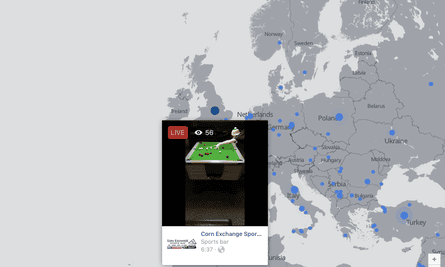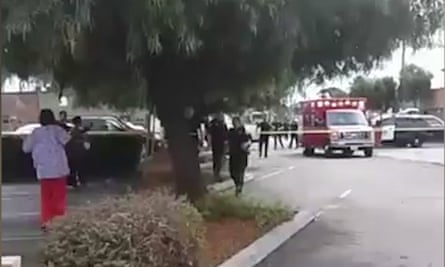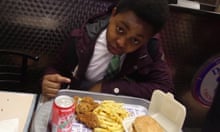In August 2015, Facebook rolled out a new feature: the ability to broadcast live video streams from the company’s app for power users, Facebook Mentions. Six months later, the feature, now branded Facebook Live, began a slow rollout for normal users, initially in the United States.
In classic Facebook style, the feature was late arriving, slow to roll out, and steadily demolished the competition. Meerkat, the company which ignited the live streaming craze, launched its mobile app in February 2015 and went meteoric at the South by Southwest Festival in March that year. But its time in the sun was limited: shortly after SXSW ended, Twitter subsidiary Periscope launched its own, technically superior, live-streaming service, eclipsing Meerkat almost instantly.
For almost a year, Periscope dominated live streaming, peaking, bizarrely, with the phenomenon of 20,000 people watching pedestrians trying to navigate a large puddle in Newcastle. But Facebook’s sheer scale ensures that when it sets its sights on an area, there’s very little most competitors can do to keep it from rolling over them like a juggernaut.

Facebook has thrown resources at its live-streaming product. Extensive developer time, ad budget, and media partnerships are all devoted to ensuring that it’s a success, thanks in part to orders from the very top: its chief executive, Mark Zuckerberg, is said to personally support the product, which he sees as instrumental to the next stage of Facebook’s growth, and has been one of the most prolific users of the feature, periodically “going live” on his own Facebook page to answer questions from users.
Beyond Zuckerberg himself, Facebook has secured the support of a number of other prominent users – partially by paying for them. Media organisations, including Buzzfeed, the New York Times, and the Guardian, have signed deals with Facebook to produce Live content, in exchange for large payments form the social network.
But power users and media firms do little to encourage other Facebook users to go live themselves – a key part of its long-term goal for the feature.
To that end, Facebook has also been on an ad blitz, coating key markets such as San Francisco, Los Angeles and London with adverts encouraging users to go live “when you see someone walking an animal that’s not a dog”, “while everyone is waiting for the first suitcase to drop” at an airport, and “when you’re just hanging out with friends or whatever”. The company has also taken a leaf out of archrival Snapchat’s book, offering a plethora of augmented reality “masks” to encourage users to play around with the tech.
But none of that had anything to do with the first viral hit to come from Facebook Live. In May 2016, a few months after the feature had launched in the US, 37-year-old Texan Candace Payne spent four minutes demonstrating a new gift she had bought for her son: a (real) mask of the Star Wars character Chewbacca, with a pre-recorded roar that plays when the wearer opens their mouth. The short video opens with a charming introduction from Payne, who quickly puts the mask on before collapsing into a fit of giggles which lasts, more or less continuously, for the next three minutes. It currently has 165m views on the social network.
In some ways, Payne’s video set the precedent for how Live videos would evolve. For one thing, although the video was broadcast live, the overwhelming majority of its viewers came long after she had put the phone down and stopped broadcasting: the difference from pre-recorded videos was evolutionary, not revolutionary. Payne doesn’t really interact with what audience there was watching her live, either, despite Zuckerberg’s earlier promises that “when you interact live, you feel connected in a more personal way”.
But in other ways, the major cultural impact of Facebook Live has little to do with Payne’s joyful short, nor really with the company’s own intentions as communicated through adverts and executive postings.
Perhaps the most important choice Facebook made in launching Live was to incorporate it directly into the main Facebook app, unlike Periscope’s initial launch as a standalone product. Facebook is no stranger to spinning popular features off into their own application – most notably with Messenger, in 2014 – but the company’s decision here means that even users who have never felt the need to explore live streaming have the option if they suddenly find themselves in extraordinary circumstances.
One such circumstance, which has become almost emblematic of the feature’s social resonance, is that of a confrontation with the state. In July 2016, less than a month after Payne’s video went viral, a very different video was broadcast from Minnesota, where Diamond Reynolds documented the immediate aftermath of a police officer shooting her boyfriend, Philando Castile. The video showed Reynolds calmly telling the officer, and viewers, what had happened: how Castile had been asked for his license and registration, told the officer he was legally carrying a gun, and was shot seven times while subsequently reaching for his license.

Castile was just the first. Keith Scott Lamont was shot in September in North Carolina, and his daughter streamed the immediate aftermath. The death of Alfred Olango, shot by police in San Diego in September, was streamed by a bystander.
The association between Facebook Live and police killings is about more than just being the only camera available. Live streaming has other features that make it appropriate for documenting the tense, dangerous moments in the aftermath of a death.
The immediacy of the broadcast can alert loved ones, while acting as a call to arms for the fight for justice. And once the video is uploaded, it’s hard to delete it: important when dealing with an untrusted adversary with the legal power to confiscate devices and suppress footage.
Even if police do manage to encourage Facebook to pull the video – as Baltimore police department did with the account of Korryn Gaines, who live streamed her armed standoff against – by then, copies have likely been made elsewhere.
And Facebook’s own systems help. The site aggressively pushes video to the top of newsfeeds while it’s still live, in an effort to encourage the interaction Zuckerberg spoke of, allowing videos to snowball rapidly to large audiences.
But those audiences also outpace Facebook’s own ability to moderate content. While videos can be reported, for spam or offensive content, just like other posts, the real-time nature of the events seems to be beyond Facebook’s scope, meaning that videos are often taken down hours after they’ve already ended.
That’s useful to activists, who can spread word of a police shooting before the video gets taken down for being “threatening, violent or suicidal”. But it has also led to a second category of videos unique to the service, depicting crimes in process, from the torture of a disabled man in Chicago to a double murder in the name of Isis in France.
Facebook could solve that problem, to a certain extent, by throwing money at it: hiring more low-paid contract workers in the anglophone developing world to watch videos of murder and rape so you don’t have to. But that still doesn’t help the company’s larger aim, of making Facebook Live a thing normal people will want to use, not just to watch paid celebrities, but to broadcast their lives to their friends and family. There is a chance that that will never be something that spreads outside of a small niche: but history suggests it’s safer to bet on Mark Zuckerberg than bet against him.









